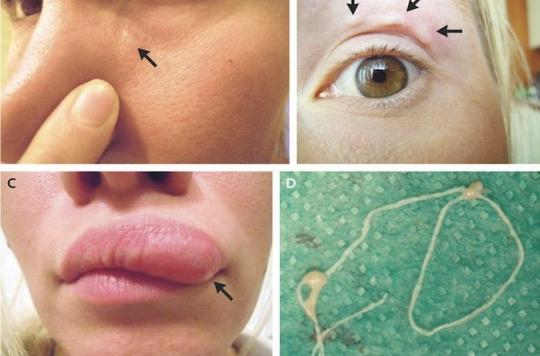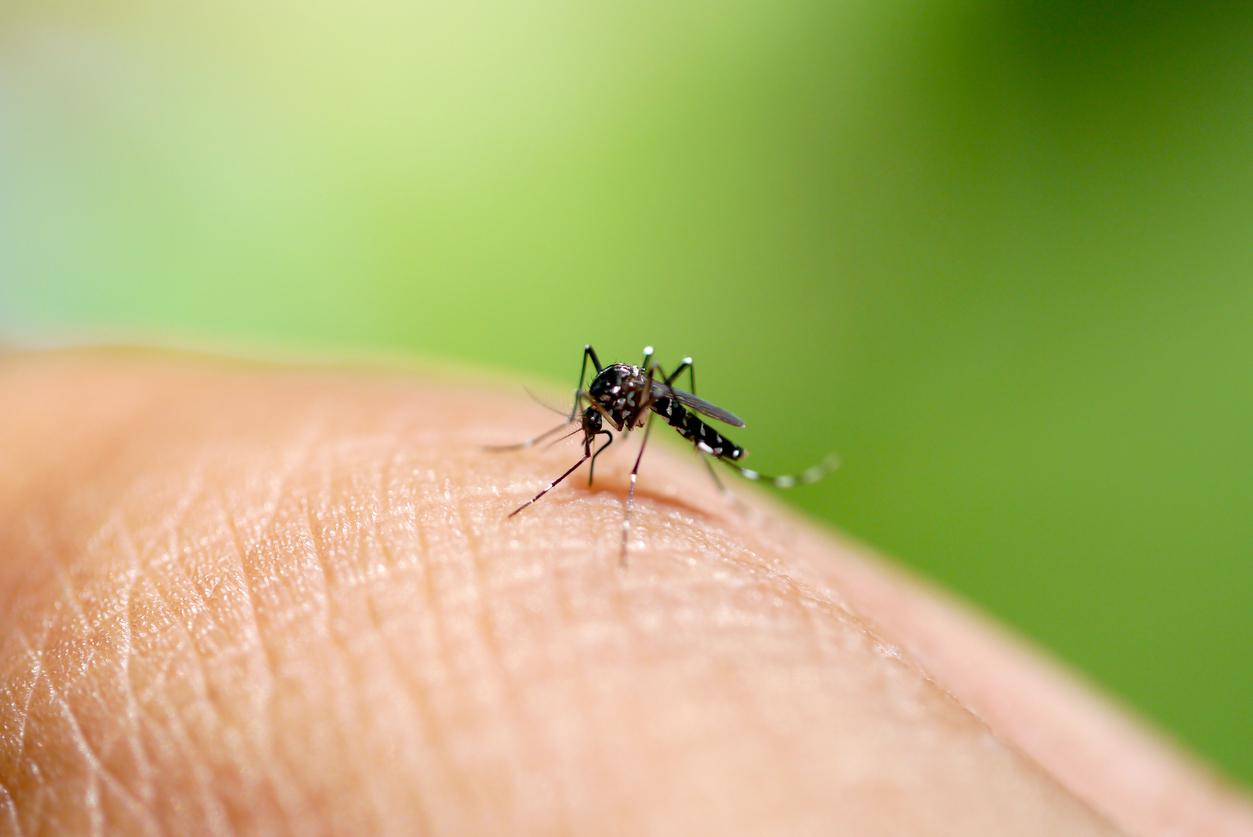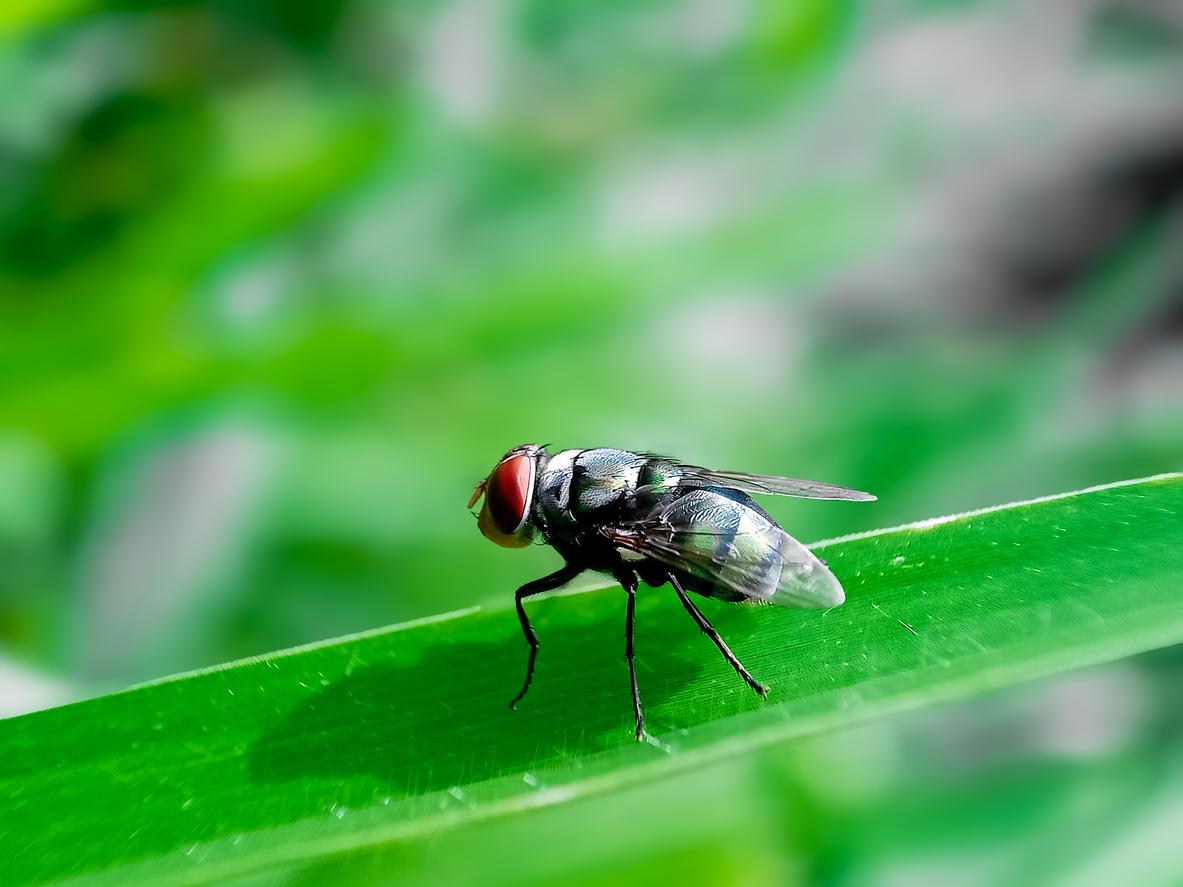In Russia, a woman for two weeks noticed the appearance of strange swellings in various places on her face. She was actually infected with Dirofilaria repens, a larva that had been inoculated into her by a mosquito bite.

The story is cold in the back. A 32-year-old Russian woman lived for two weeks with a worm that roamed at leisure under her face. According to the review The New England Journal of Medicine which relates the facts, it was a Dirofilaria repens larva, a parasite that can be inoculated in humans by a mosquito bite.
It all started when the young woman noticed the appearance of strange swellings on her face. She first saw a lump under her left eye and then, five days later, several swellings above her eyelid. The deformed areas sometimes made her suffer, itchy, or burned her. But she really started to panic when one fine morning she discovered that the left part of her upper lip had doubled in size.
She then immediately went to the hospital armed with selfies she had taken throughout the week to show them to the doctors. Noting that the deformation had regained the eyelid, they quickly understood that it was a parasite and were able to remove it using surgical forceps.
Man: accidental guest
After analyzes, scientists discovered that it was a larva of Dirofilaria repens, a worm that can be inoculated in humans by mosquitoes and that the young woman had caught during a recent stay in a rural area. “where she had been frequently stung”. This parasite grows in the body of certain infected mammals such as dogs, cats or foxes. By biting a carrier animal, mosquitoes pick up Dirofilaria larvae at their first stage of development. When they transmit them to a human organism, an accidental host, these larvae cannot reach the final stage of their development: they are stuck under the skin where they travel at leisure before dying of themselves.
According to Vladimir Kartashev, professor of surgery and doctor who saw the unfortunate woman, “doctors who do not know the disease do not believe patients”. Hence the interest of selifes, he explained to CNN, specifying that this little-known disease was called heartworm.
A few other cases of this kind have already been reported in the scientific literature. In 1996, an Italian suffered from this disease. Then, in 2009, on his return from a trip to India and Sri Lanka, a German had developed meningoencephalitis linked to the presence of this nematode. He had recovered from anti-inflammatory treatment and pest control. Most often, the worm only attacks adults, with the exception of Sri Lanka, where children can be infected, with the youngest individual ever affected being four months old by this time. But if the cases of heartworm remain rare, according to Dr. Vladimir Kartashev, they still went from 8 in 1997 to 200 in 2012. The worm has also been identified in France …
See below a video of another case of Dirofilaria repens
.















